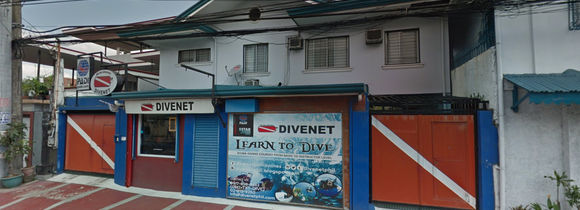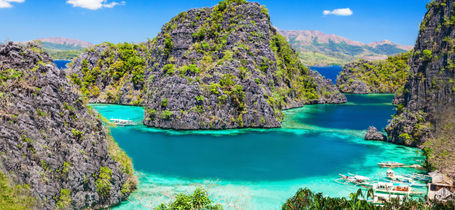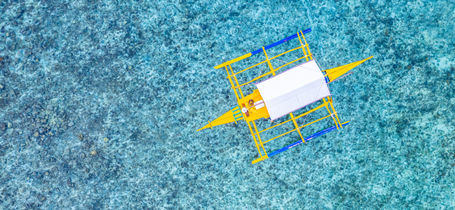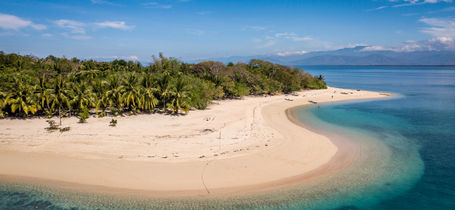Manila Diving
The bustling, metropolitan hub that is Manila seems a world away from the peaceful calm of the ocean waves. But, less than 3 hours drive away, lies paradise dive sites, stunning beaches and laid back resorts. The dive sites in this region have something for everyone, from gentling sloping reefs of Anilao and Puerto Galera to the impressive WWII wrecks in Subic Bay
Diving in Manila
The city of Manila lies on the largest Filipino island of Luzon. As the Philippines capital, it is the largest and busiest city - often cited as the most densely populated in the world. The city itself doesn’t have any dedicated diving, but there are plenty of places on the island of Luzon which you can get to easily by car. There are also liveaboards which leave from the city itself in order to reach these dive hotspots.
The southern area of Batangas has the famous dive resort town of Anilao, which is popular with dive courses due to its lovely, beginner-friendly reefs. Subic Bay on the western side of Luzon is the location of many popular wreck dives. With plenty of dive centres, it is easy to dive the many wrecks here - most are relics of its days as a naval base during WWII. A combination of, both Japanese and American, warships and planes litter the sea bed and is a haven for any wreck-diving junkie.
Best time to dive
Manila has a warm humid climate and it is possible to dive in this area year-round. November - May is the dry period of the year with minimal winds and rainfall, with May tending to be the warmest month. It is also the best time to dive because of calm conditions and good visibility. As a result, it can get very busy. During weekends and big holidays like New Year and Easter, resorts can fill up quickly.
From June - October, the rains increase from an average of 4 rainy days in February to 21 in July. The diving conditions are normally not affected too much and the resorts and dive sites are quieter. Do bear in mind that rougher seas can sometimes limit liveaboard and dive boat travel.
Types of diving
Diving in Manila is diverse - there is something for everyone. For the beginners, reef capital Anilao is perfect. The sloping reefs are ideal for dive courses because they can be catered to all levels. The hard and soft coral gardens host lots of life which will enchant newbies and experienced divers alike. Puerto Galera, a short hop from Anilao on Mindoro Island, has a similar, laid back vibe with reefs and beaches aplenty.
Verde Island, in the straight between Luzon and Mindoro, has some excellent wall dives for the more advanced. Lying in deep water, it sometimes draws strong currents - but rewards divers with pelagic life sightings and stunning walls coated in corals. Subic Bay is a must dive for any wreck enthusiast with over 10 fantastically preserved wrecks.
What to see
The macro life around Anilao is some of the best, with purportedly the highest diversity of nudibranch in the world. Aside from them, you can find cuttlefish, squid and octopus (including blue-ringed, mototi, coconut and mimic) all hiding on the reef. Tiny lobsters, shrimp and crabs offer great photographic opportunities along with other camouflaged beasties like ghost pipefish and frogfish.
Schooling fish are common in all locations around Luzon because of the healthy reefs - tornados of jack, barracuda, fusiliers are frequent sights. Turtles are drawn to the reef systems too as the food is abundant. Bigger fish like tuna and trevally can be seen hunting. White and blacktip reef sharks are common at many dive sites, especially where there are holes. Marble rays, stingrays and eagle rays can be seen if you’re lucky.
In the deeper water, albeit rarely, you might get to see manta rays and whale sharks, particularly when the current draws in plankton at deep sites like Verde Island.
Best places to dive
San Agapito Point, Verde Island. Schools of fish, sea snakes and macro life set against a backdrop of massive sea fans and kaleidoscopic soft corals will thrill any diver. Technically it can be catered for all but the drop into 70m+ waters and the occasionally strong currents may intimidate less experienced divers.
The Canyons, Puerto Galera. Schools of trevally, snappers and barracuda hover over this site and the canyons offer lots of hiding places for little critters as well as reef sharks.
Mainit Point, Anilao. Anilao has stunning reefs and this is a classic example, with macro life to please even the most demanding diver as well as visitations from grey reef sharks and marble rays.
USS New York, Subic Bay. Lying at 17-27m, this is an iconic wreck, with all of her eight guns still intact. Be warned; you might want more than one dive here!
El Capitan, Subic Bay. Accessible to all levels, you can penetrate the engine room, cargo holds and galley on this dive, accompanied by a huge shoal of jackfish.



